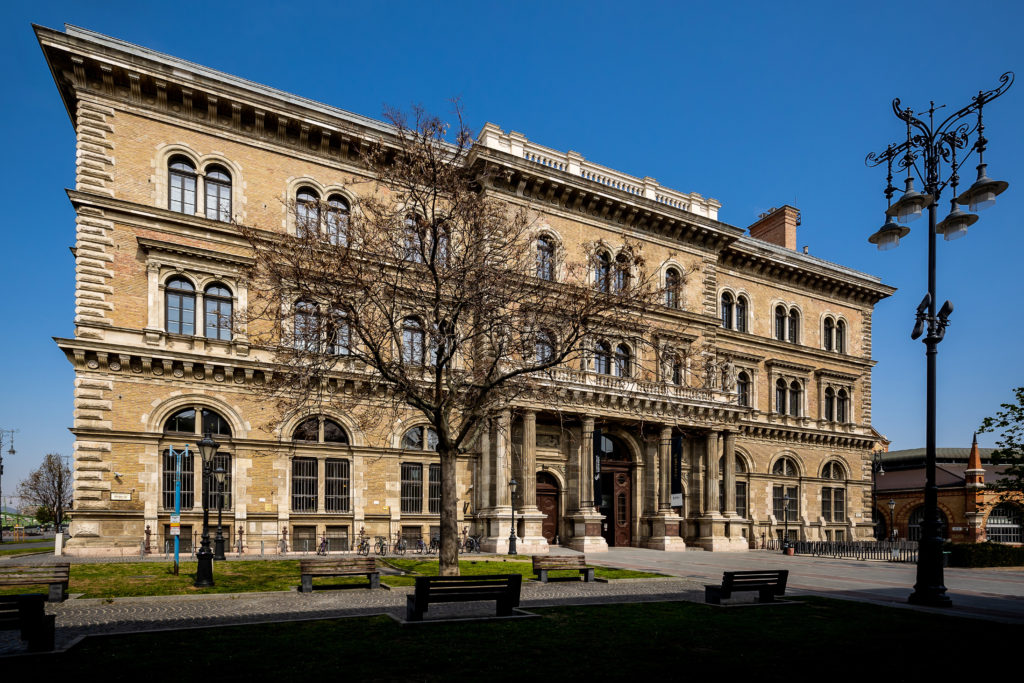Significant changes at Corvinus – less students per teacher

Lajos Szabó, Vice-Rector for Education at the Corvinus University of Budapest explained to Portfolio that they were working on a system that would allow the students of the University to work in smaller groups and get more attention in the future, so they had introduced and would introduce new teaching methods. The objective is to reach a student-teacher ratio of twelve-thirteen to one in the forthcoming years.
Economic and social changes have an enormous impact on education. There is a competition for the best students, teachers, and future employers expect graduates to have some experiences and practical skills already. The 2020 World Economy Forum in its Future of Jobs report pointed out that it is critical way of thinking and problem-solving that are on the top of the list of skills that will probably become more and more important in the next five years, according to employers. The report says that team work and creativity will have a higher value.
It is no surprise that these are the key competencies to which the Corvinus University of Budapest pays significant attention. Since the transition to the foundation form, significant changes have taken place in the institution. As a result, for high-level and quality education, the University admitted less students – but with higher points than before – from the much higher number of applicants to the Bachelor programmes. In addition, a lot of programmes have been renewed, and new programmes will start in the near future – that have not existed so far in Hungary, but already exist at leading international universities – such as business data science or economic behaviour analysis programmes.
Our most important task is student competence development, and related to that, the definition of output competences, i.e. what is expected by the labour market, and as a result by the university from its graduating students. Following that, we will start to renew programmes and teaching methods, focusing on students learning.
– said Lajos Szabó, Vice-Rector for Education at the Corvinus University of Budapest, adding that their benchmarks were world-famous international universities such as the Harvard University, the Maastrict University or the Aalto University.
New teaching methods
As the objective was to activate students and make courses interactive, a lot of new methods have been introduced. They include corporate case study based or project based education, or the method of mirrored classroom.
The latter is an established practice at the Harvard University. The idea is that students attending a given course prepare for the lessons, the teacher gives them material, and instead of frontal teaching and the presentation of the material, the focus during the lessons is on questions about the material and the explanation of deeper relations.
– explained the Vice-Rector. The cooperative teaching method has also been present in Scandinavian countries for a long time, but it is still not widespread in Hungarian higher education, although it is efficient, works well, and it is regularly used at the Corvinus. With this method, students learn to cooperate efficiently, adjust to each other and exchange different ideas. Research based training is a novelty in Hungary, it means that students and teachers are involved in joint research tasks, and the material is learned along that.
These methods do not work in groups of high numbers. The student-teacher ratio is presently 24 to 1, this has to be changed. At famous international universities, this ratio is twelve to one, which is what we should achieve.
– he added.
Instead of one and a half hours per week, several months of intensive work on a particular topic.
Lajos Szabó also explained that in the economic analyst, business development and management and organisation master programmes, they already teach the subjects in blocks, following the example of the Maastricht University.
Students attend a particular course for a quarter of a year, this way there is time and opportunity to pay attention to all the issues raised, to get involved in particular subjects, as that would be impossible with fragmented courses in one and a half hour per week.
– he added.
Experiential education and university services go hand in hand
Apart from the development of the training, the University places great emphasis on the renewal of student services, too. The examples are the outstanding competitors in the region again, such as the University of Economics of Vienna, the SGH University of Economics in Warsaw, the University of Ljubljana or the University of Economics of Prague. At these universities, most of the student administration is done in digital form.
The introduction of the MyCorvinus application was a major step forward, as it makes students’ lives much easier, allowing fast and smooth administration.
– said Szabó, adding that students’ feedbacks are very important, as they are the basis of changes and improvements.
So far students have been able to assess a given course or the performance of a given teacher at the end of semesters, but this will change. A service called Voice will soon be introduced, this will allow students to give immediate feedbacks after each lesson, in anonymous way, indicating what they liked, what they found good and useful, and what are the things they were not satisfied with.
‘With the complex feedbacks, we can continuously improve the processes at the University, be it student services, administration or a training programme’ – said Lajos Szabó, who thinks this is the key to making sure that they are able to offer the best to their students. He added that the international opportunities of students are also very important.
‘As a result of stronger international cooperation and internationalisation, students have a lot of foreign opportunities, from dual degree programmes to Erasmus. A semester spent at a foreign university, in international environment offers a lot of experiences, which may come useful later for students on the labour market’ – said Lajos Szabó.
Source: Portfolio.hu